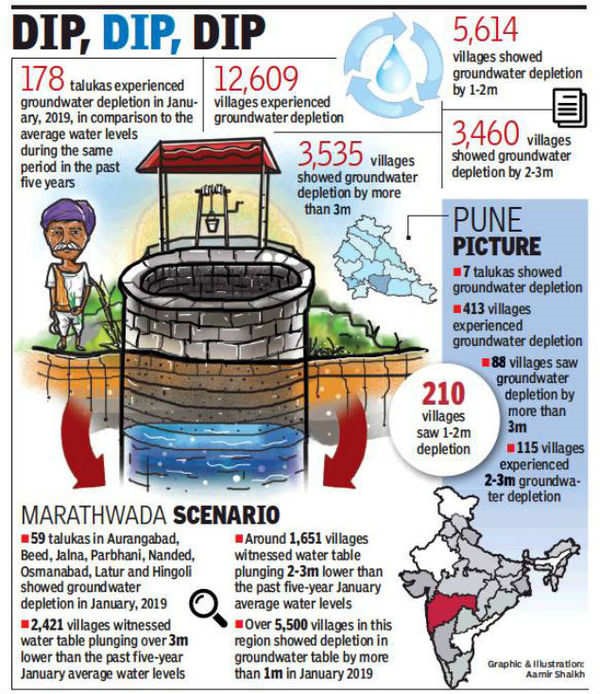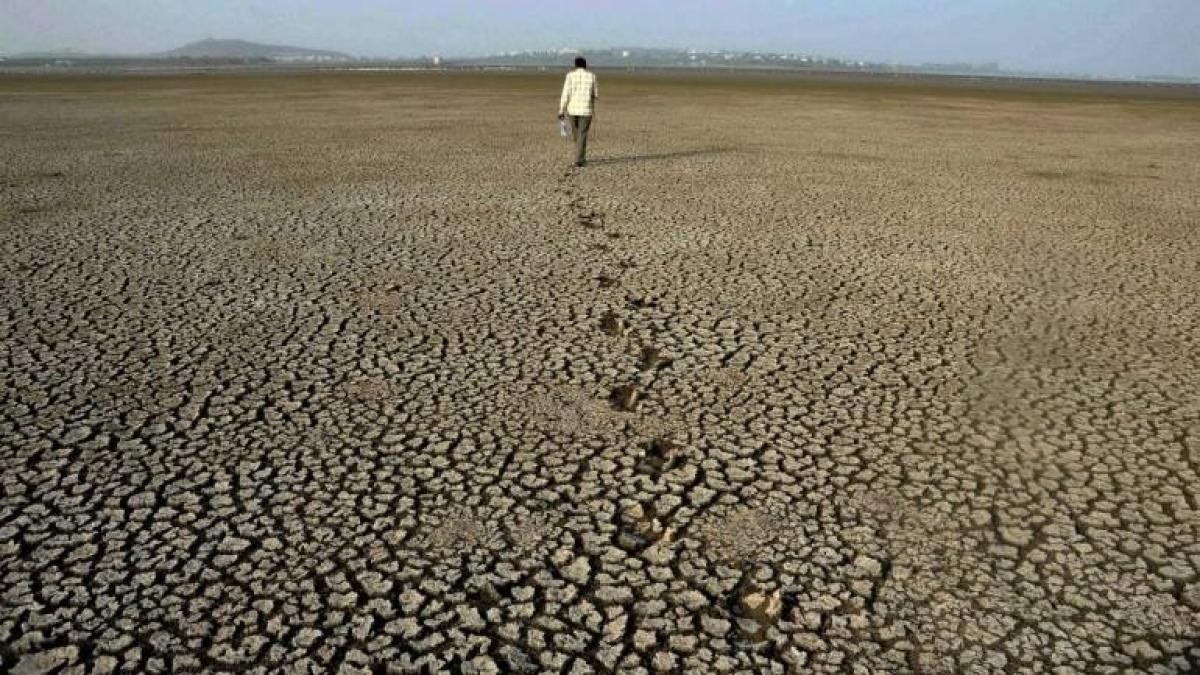
PUNE: The groundwater level in at least half of Maharashtra showed signs of depletion this January in comparison to the average of the past five years.
The data from the Groundwater Survey and Development Agency (GSDA) mean the water table in 50% or 178 talukas (of the 353 monitored by the GSDA) in the state during January 2019 plunged below than the average levels for the month in the past five years.
The Marathwada region, followed by north Maharashtra, seems to have suffered the most with the number of villages showing depletion in January adding up to 8,400- plus. This is primarily because Marathwada witnessed 21% rainfall deficiency. The precipitation was subpar in central Maharashtra and Vidarbha, but as per IMD, it was in the normal range.
Officials said north Maharashtra also recorded a below-normal rainfall last monsoon.
In January 2018, nearly 10,300 villages showed groundwater depletion by more than one metre. This January, the number has increased to 12,609 villages. There are approximately 44,000 villages in Maharashtra.
An official from GSDA said all these 12,609 villages had recorded over 20% or more rainfall deficit in monsoon last year. “There are many other villages which did not record rainfall deficiency, but their water table is still dipping,” he said.

Over 3,500 villages in the state have registered a dip in the groundwater table by over 3 metres in January 2019 in comparison to the average January levels of the past five years.
A GSDA official told TOI that the January data cannot be used to predict water scarcity. It is predicted with the help of October groundwater monitoring, he said. “The fluctuation in groundwater levels in January is used to estimate the extraction of water after October,” he said.
The official said the water scarcity action plan had been prepared on the basis of the October, 2018, report. “The January data are indicative of the groundwater extraction after November last year, mainly for irrigating Rabi crops. Unhindered extraction and mismanagement of groundwater are the main causes for the dipping water table. Farmers’ mindsets need to be changed in such cases because the well owners often indiscriminately withdraw water despite knowing that the monsoon has been deficient,” the official said.

Photo Credit: NewsClick
On why the Marathwada region had the highest number of villages with groundwater depletion, the official said that regions where the monsoon was deficient naturally experienced more depletion in groundwater table, which is why many villages in Marathwada, north Maharashtra and Vidarbha were showing dipping groundwater levels.
The GSDA monitors water levels through 3,920 observation dug wells, covering the entire state, in 1,535 watersheds. The data collected is useful in forecasting the probable scarcity area in the state after every monsoon, assessing the groundwater draft and recharge.
Meanwhile, the live storage of 14 of the 17 reservoirs monitored by the Central Water Commission in Maharashtra has plunged below the average stock of the past 10 years as well as that in the same period last year. The storage in the state dams is 35% less than the average storage of the past 10 years, a recent report of the commission stated.
The Central Water Commission (CWC) monitors the storage in 91 major reservoirs in India. The 17 dams monitored in the state include Khadakwasla, Jayakwadi, Pench, Girna and Upper Vaitarana.
Vardhman Envirotech
India’s Passionate rainwater company
This article is published on: The Times of India, 24 March, 2019
We would like to spread this for the benefit of fellow Indians.
